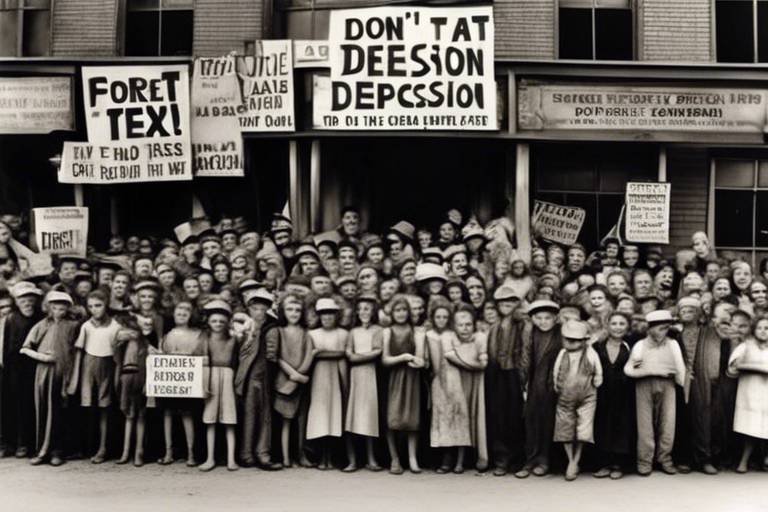The Role of Women in Ancient Rome
Exploring the societal status, responsibilities, and challenges faced by women in ancient Roman civilization sheds light on their crucial roles in family, politics, religion, and daily life. Women in ancient Rome played multifaceted roles that shaped the fabric of society and influenced various aspects of Roman life.

Social Status of Women
Women in ancient Rome held a complex and multifaceted social status that was influenced by various factors, including their gender, class, and marital status. While Roman society was patriarchal in nature, women played vital roles in both private and public spheres, contributing significantly to the functioning of the household and occasionally exerting influence in political and religious arenas.
Despite being regarded as inferior to men in legal and social contexts, Roman women possessed certain rights and privileges that allowed them a degree of autonomy within the confines of their societal roles. They were expected to embody virtues such as modesty, chastity, and fertility, ideals that were reinforced through cultural norms and legislation.
Women of different social classes experienced varying degrees of freedom and restrictions. Elite women, such as the wives of senators and aristocrats, often enjoyed more privileges and opportunities for education and social engagement compared to their lower-class counterparts. However, all women were subject to the overarching authority of male relatives and the state.
The social status of women in ancient Rome was defined by a delicate balance between subordination and agency, as they navigated the expectations and limitations imposed upon them by a society deeply rooted in traditional gender roles. Through their actions and relationships, women carved out spaces of influence and power, challenging and reshaping the boundaries of their societal roles.

Women in the Family
Women played a crucial role within the family structure in ancient Rome, contributing significantly to the household's functioning and dynamics. While Roman society was patriarchal in nature, women held essential responsibilities and wielded influence within the family unit. They were expected to manage the domestic affairs, oversee the upbringing of children, and maintain the household's well-being. Additionally, women often played a key role in preserving family traditions and values, passing them down to future generations.

Maternal Duties
In ancient Rome, held significant importance in the societal structure, reflecting the value placed on motherhood and the upbringing of children. Women in Roman society were primarily responsible for managing the household and nurturing the next generation. The role of a mother extended beyond childbirth to encompass the upbringing, education, and moral guidance of children, shaping their values and beliefs.
Childbirth practices in ancient Rome were surrounded by rituals and traditions, with midwives playing a crucial role in assisting women during labor and delivery. The well-being of both the mother and the newborn child was a primary concern, with various remedies and practices employed to ensure a successful birth. Women were expected to endure the challenges of childbirth with strength and resilience, embodying the ideal of maternal sacrifice and dedication.
Once born, children were raised under the watchful eye of their mothers, who instilled in them the virtues of piety, discipline, and respect for authority. Maternal influence extended beyond the confines of the household, shaping the moral fabric of Roman society through the values passed down from one generation to the next. Mothers were seen as the primary educators of their children, imparting knowledge and wisdom essential for success in both personal and public life.
The significance of raising children in Roman culture was underscored by the belief that the future of the state depended on the virtues instilled in its youth. Mothers were tasked with cultivating the next generation of citizens, preparing them to uphold the values of Roman society and contribute to its prosperity. The bond between mother and child was revered, symbolizing the continuity of the family lineage and the transmission of cultural heritage.

Political Participation
Political participation for women in ancient Rome was a complex and multifaceted issue. While women were generally excluded from formal political positions and decision-making processes, they still found ways to exert influence and engage with the political sphere. One significant avenue through which women could participate politically was through patronage. Wealthy and influential women often used their resources to support politicians and fund public projects, thereby indirectly influencing political outcomes.
Additionally, women in ancient Rome could also engage in politics through public displays of loyalty and support for their male relatives who held political power. By attending public events and ceremonies alongside their husbands or male family members, women could demonstrate their alignment with specific political factions or individuals, thus contributing to the political landscape of the time.
Furthermore, women's influence over their male relatives, particularly husbands and sons, played a crucial role in shaping political decisions. While women themselves were not able to hold official positions of power, they could sway the opinions and actions of the men in their lives, thereby indirectly impacting political affairs.

Female Religious Practices
Female religious practices in ancient Rome played a significant role in shaping the spiritual landscape of the society. Women were actively involved in various religious rituals and ceremonies, both within their households and in public settings. One of the central aspects of female religious practices was the participation in household worship, where women took on the responsibility of maintaining the sacred hearth and offering prayers to the household gods. This duty was considered essential for the well-being and prosperity of the family.
Furthermore, women also participated in public ceremonies and festivals dedicated to female deities such as Venus, Juno, and Vesta. These festivals provided women with the opportunity to come together, celebrate their shared beliefs, and seek divine blessings for fertility, marriage, and protection. Women played a crucial role in ensuring the continuity of religious traditions and were often seen as the guardians of spiritual practices within their communities.
In addition to their active involvement in religious rituals, women in ancient Rome also served as priestesses in certain cults and temples. These priestesses held significant influence within their religious communities and were responsible for conducting sacred ceremonies, interpreting omens, and offering guidance to the faithful. The role of priestesses allowed women to wield spiritual authority and contribute to the religious fabric of Roman society.

Challenges and Restrictions
Exploring the societal status, responsibilities, and challenges faced by women in ancient Roman civilization, shedding light on their roles in family, politics, religion, and daily life.
Understanding how women were perceived and treated in Roman society, including their legal rights, social expectations, and limitations imposed upon them.
Examining the roles and responsibilities of women within the Roman household, their influence on children, marriage customs, and interactions with male family members.
Highlighting the importance of motherhood in ancient Rome, discussing childbirth practices, child-rearing techniques, and the significance of raising children in Roman culture.
Exploring the limited avenues through which women could engage in politics in ancient Rome, such as through patronage, public displays, and influence over male relatives.
Delving into the religious roles and rituals performed by women in ancient Rome, including their participation in household worship, public ceremonies, and festivals dedicated to female deities.
Addressing the societal constraints and obstacles faced by women in ancient Rome, such as gender-based discrimination, lack of educational opportunities, and limitations on public appearances.
Discussing the legal framework governing women's rights in ancient Rome, including property ownership, marriage laws, and the evolution of legal protections for women over time.
Analyzing how women were portrayed in Roman literature, art, and inscriptions, exploring both idealized depictions and more realistic representations of women's lives.

Legal Rights and Protections
Legal rights and protections for women in ancient Rome were significantly influenced by the prevailing social norms and legal system of the time. While women were considered to be under the legal guardianship of their fathers or husbands, they did have certain rights and protections in place. One key aspect of legal rights for women in ancient Rome was the ability to own and inherit property. Although property ownership by women was limited compared to men, especially in terms of land ownership, women could still possess personal property such as jewelry, clothing, and household items.
Marriage laws in ancient Rome also provided some level of protection for women. For instance, the concept of dowry played a crucial role in marriage contracts, where the bride's family would provide a dowry to the groom upon marriage. This practice ensured financial security for the wife and served as a form of legal protection. Additionally, Roman laws regulated the process of divorce, with women having the right to seek divorce under certain circumstances, although the legal procedures were often complex and favored men.
Over time, there were developments in legal protections for women in ancient Rome, particularly in the area of inheritance rights. Changes in legislation allowed women to inherit property from their relatives, including their fathers, which provided them with a degree of financial independence. However, these legal advancements were limited in scope and did not grant women full equality with men in terms of legal rights and protections.

Literary and Artistic Representations
Exploring the societal status, responsibilities, and challenges faced by women in ancient Roman civilization, shedding light on their roles in family, politics, religion, and daily life.
Understanding how women were perceived and treated in Roman society, including their legal rights, social expectations, and limitations imposed upon them.
Examining the roles and responsibilities of women within the Roman household, their influence on children, marriage customs, and interactions with male family members.
Highlighting the importance of motherhood in ancient Rome, discussing childbirth practices, child-rearing techniques, and the significance of raising children in Roman culture.
Exploring the limited avenues through which women could engage in politics in ancient Rome, such as through patronage, public displays, and influence over male relatives.
Delving into the religious roles and rituals performed by women in ancient Rome, including their participation in household worship, public ceremonies, and festivals dedicated to female deities.
Addressing the societal constraints and obstacles faced by women in ancient Rome, such as gender-based discrimination, lack of educational opportunities, and limitations on public appearances.
Discussing the legal framework governing women's rights in ancient Rome, including property ownership, marriage laws, and the evolution of legal protections for women over time.
Analyzing how women were portrayed in Roman literature, art, and inscriptions, exploring both idealized depictions and more realistic representations of women's lives.
Frequently Asked Questions
- What rights did women have in ancient Rome?
Women in ancient Rome had limited legal rights compared to men. They could own property, inherit wealth, and engage in business transactions. However, they were not allowed to vote or hold political office.
- What roles did women play in the Roman family?
Women in Roman families were primarily responsible for managing the household, raising children, and overseeing domestic affairs. They also played a significant role in shaping the moral values and education of their children.
- Did women participate in politics in ancient Rome?
While women were excluded from formal political positions in ancient Rome, some women wielded influence behind the scenes through their relationships with powerful men. They could exert political influence through social connections and patronage.
- What were the main challenges faced by women in ancient Rome?
Women in ancient Rome faced challenges such as limited access to education, restrictions on public participation, and societal expectations that confined them to traditional gender roles. They also encountered legal and social barriers that restricted their autonomy.
- How were women depicted in Roman literature and art?
Women in Roman literature and art were often portrayed in idealized or stereotypical roles, reflecting societal expectations of femininity and virtue. While some depictions celebrated women as nurturing mothers and loyal wives, others reinforced traditional gender norms.


















